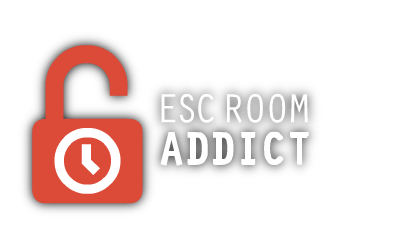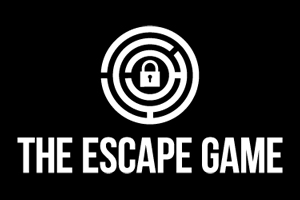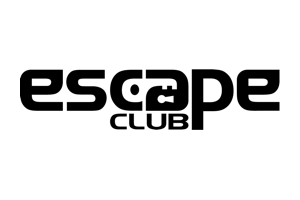Aliens Are Attacking!
Aliens Are Attacking!
- Played November 2019
- Toronto, ON
- 60 minutes
- 3+ players
- N/A
- Great for families
- Immersive Technology
- 604-229-9295
- What People Say
Hello recruits, we don’t have time for the usual formalities so you’ll have to get yourself familiar with your surroundings as soon as possible. As you know, you’ve been carefully pre-screened and selected for this mission and it’s important you pay attention to everything we’re about to tell you. One of earth’s deep space probes has identified five alien space vessels on a direct trajectory towards earth, and from what little we can tell by their communications their intentions are hostile. It’s up to you to locate the source of their incoming transmissions, decipher the alien language, and lastly put a plan together to halt this invasion before they reach earth. The survival of the human race depends on you!
And so off we started, with Immersive Technology’s newest in-home (or in-office) game… Aliens Are Attacking! It’s important to note we were working with a reviewer’s print and play copy of the game and therefore many of the components we interacted with are not final versions. The game’s introduction started with a couple PDF files to print alongside accompanying instructions on what needed to be cut, folded, and/or manipulated in some fashion. This process took about 30-40mins from start to finish, so we were building a wee bit of anticipation as we sat down around a table with our scissors, folders, clipboards, and paperclips.
The quality of the game components left most of our team members feeling a bit disappointed. Being that it was a print and play version of the game, it’s easy to say the components were low quality paper cut-outs, but it wouldn’t be completely fair because we anticipate better production values in the final version. The game also included some video clips and computer interface tasks, which reminded us a lot of the early 1990’s point and click style adventure games popular among Gen-X’ers. One thing that wasn’t included were the instructions on how to play the game. We stumbled for several minutes until we realized the game pieces and folders we created during the set up were meant to be used by the different player roles. Once we got that figured out, things started to come together a bit smoother. Environmentalists will also have a tough time with the amount of paper used for this game, much of it being needlessly duplicated. Still, we did appreciate the way the components were used and it at least demonstrated some effort in game design.
Aliens Are Attacking! struggled to give our teams a strong immersive experience. There were brief moments of curiosity at what might be coming next, but unfortunately the game didn’t really do a good job of developing a story. The intended concept of this game is good (using team building tasks and puzzles to uncover a mystery and work towards a solution). Unfortunately the game is delivered more in the style of reading a math textbook where you sit down, complete an equation, (with everyone gathered around solving the same task), then it’s right to the next equation (or in this case, game related task). There wasn’t really much that added context, excitement or intrigue to the game. In fairness, story development and integration is a general weakness for most in-home games (and escape rooms for that matter), but in this case it’s particularly noticeable.
The puzzles and tasks of Aliens Are Attacking! proved to be the one aspect which generated the most discussion and feedback among our play-testers. The intended target audience of this game was meant for large corporate team building experiences, so we included those who’ve had several team building experiences in their workplaces. They felt the game lacked the necessary complexity for a good team building exercise because of its linear puzzles, simple tasks, and lack of inclusivity. The common consensus for our first group of play-testers was this game is better suited for a family of 2-3 people, in a ‘round the table’ style rather than within a board room by many people. We wanted to see how true this was so we invited a second group of people (this time four individuals which included one child aged 13) to simulate a family playing the game around a table. Much of the feedback was the same, in terms of the puzzles being linear, simple, and generally lacking inclusivity, but the most noticeable common point was how our 2nd team felt this game was ideal for 3-4 people including children who like being included in puzzle solving tasks with their parents. So if simple, straight forward puzzles with your children is something that appeals to you, this might be a good choice.
In the end did we have fun? Well, it depends who you ask. Most of the adults found themselves fairly bored, and not very engaged throughout the game. When the second group played it however there was a bit more of an appreciation of how it allowed children to enter into the game and get involved in various manners. In both cases though, it’s important to know this game is NOT a big group game. It’s good for 2-3 people but once you go beyond that number there will be people watching everyone else play with them not having any real tasks to perform. So would we recommend this game to general audiences, or those looking for a big group experience? No. Would we recommend this game to a small family with kids who want to try a basic puzzle game that includes everyone around the table? Yes, it definitely fits that niche well.
We want to hear your thoughts! Be sure to comment in the section below or send us a message via ERA’s email, Facebook, Instagram, YouTube, or Twitter… As always, happy escaping!
Final Verdict: | 4.9/10 |





